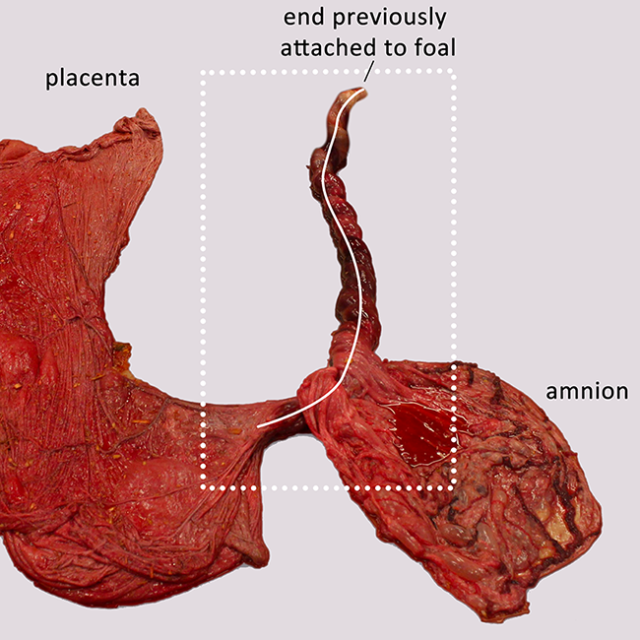By Chris Gould / CWHBA
Photography: Linda Finstad, Dr. Madison Ricard DVM
Long-time Canadian Warmblood member, volunteer, and competitive rider Madison Ricard graduated from the University of Calgary School of Veterinary Medicine in 2020. She subsequently became a veterinary anatomic pathology resident at the Western College of Veterinary Medicine in Saskatoon, SK.
There she heads a study relating umbilical cord length and twists to foal health. This article explains why and how she is recruiting worldwide breeder participation.
While a full time student in Calgary, Madison competed her Canadian Warmblood, Donndiego (Donner Bube x Zodiak), up to 1m35. They won the 2016 Level 2 Jumper CWHBA award and also the Jump Alberta 1m20 Jumper Year End Award in 2016 and 2017.
Unravelling the umbilical cord
Does cord’s length and twists affect foal health? [By Myrna MacDonald]
Western College of Veterinary Medicine (WCVM) researchers have added a couple of new ‘twists’ to research focusing on the link between equine umbilical cords and foal health.
Veterinary anatomic pathology resident Dr. Madison Ricard and her supervisor, Dr. Bruce Wobeser, are investigating whether excessively long umbilical cords or cords with more twists than usual affect the health outcomes of foals.
Previous studies have investigated the link between umbilical cord length and equine abortions, but this study is the first of its kind: “As far as we can tell, nobody has looked at that situation before on live foals. It’s always been on aborted foals,” says Wobeser.
The researchers are also relying on social media to find participants and online surveys and cell phone images to gather information. Ricard, who develops websites and has an interest in social media, has been sharing the study’s details through horse breeding groups online. “It is outside the norm,” says Wobeser. “But really, social media data collection is just survey data. We’re surveying a different group of people with different tools. It’s absolutely worth trying.”
The WCVM researchers are encouraging owners to enrol their pregnant mares in the study, which includes a few steps outlined on their website (wcvm-equs.ca). Immediately after foaling, the owner takes a photo of the umbilical cord and measures its length. Next, the owner records information about the mare, the foaling process, and the foal’s health at birth. These details can be submitted online or by using a printable, stall-side form. The owner also fills out surveys about the foal’s health – one at seven days and another at 30 days after birth. “If there’s anything unusual about the foal’s health, that’s what we want to capture,” says Ricard, who plans to sort information into categories such as infectious versus non-infectious conditions, and congenital issues versus bacterial or viral infections. “From there, we can do our statistics, home in on those categories, and then see the outcomes we find.”.. To read the complete article you need to be a subscriber
CLICK HERE TO SUBSCRIBE TO BREEDING NEWS
SUBSCRIBERS CAN READ THE COMPLETE ARTICLE BY LOGGING IN AND RETURNING TO THIS PAGE




